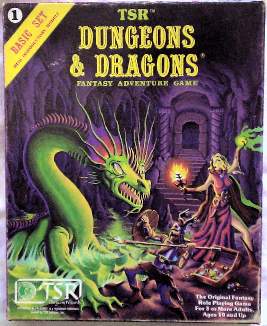Here is the last part of the “Ludewood & Surrounding Territory” document I had typed up 2000 from earlier notes. See “Ludewood Area Map Key,” “Ludewood Random Encounter Charts” and “Ludewood PC Origins / Backgrounds” for earlier sections.
Languages
There are several languages commonly used within the territory. The human common tongue is Svndalish, the language of the Kingdom of Svendl in Holothom. The folk of that land came to Danarbi over 50 years ago. (NOTE: Characters who have the “immigrants from the colonies” origin will probably have a different native tongue, such as Banli or Duvra. They must use a proficiency slot if they want to speak Svndalish. Children or grandchildren of immigrants are assumed to know Svndalish as their native tongue.)
The other prominent human tongue is Ujali, the language of the Ujola, Tivalean, and Wayglath Nomads. These folk have roamed the plains of Danarbi for hundreds of years. (NOTES: As noted above under “Origin Abilities,” nomad characters have Ujali as a native language, and must use a proficiency slot to speak Svndalish. The only exceptions are the Elarites, whose settled lifestyle and long contact with Ludewood allow them to know both languages as their native tongue without spending a proficiency slot.)
The demihuman languages, Elvish, Dwarvish, Gnomish, and Holba (the halfling tongue), are less widely used, except in those regions inhabited by those demihumans (Borantin, Inkon Mountains, Jumor, Shunoff). (NOTES: Demihumans with the “exodus clan member” origin speak the appropriate racial tongue as their native language, and must use a proficiency slot to know Svndalish or any other human language. Demihumans with the “immigrants” or “descendants of immigrants” origins may choose their native tongue, but it must be the appropriate racial language, Svndalish, or another human Holothonian language. If they wish to speak a language that has not been chosen as their native tongue, even if it is the appropriate racial tongue, they must spend a proficiency slot.)
Various monster tongues, especially those of types common to the territory, are generally known only to the monsters and some sages and adventurers. Such languages include: Goblin, Kobold, Orcish (although not the same as Holothonian Orcish), Gnollish, Bugbear, Lizard Man, Dragon, Hill Giant, Centaur, and Treant.
Religions
There are also several religions observed within the territory, notably two human religions and two demihuman religions.
The two human religions are the Asgardian (Aesir) and the Ujali. The Svndalish and their descendants follow the ways of Odin, Thor, and Loki. The various nomad groups follow the ways of the Four Brothers (elemental spirits of Earth, Air, Fire, and Water). (The Four Brothers are: Earth Brother Ulok, Air Brother Satar, Fire Brother Azar, and Water Brother Terant.) The Tivaleans tend to revere the Earth Brother and the Air Brother more than the other Brothers. The Ujola tend to revere all the Brothers about equally. The Wayglath strongly revere the Fire Brother above the others. The Elarites revere the Earth Brother and the Water Brother, but are careful to show respect to the other two Brothers.
The two demihuman religions are the Elven and Dwarven. The elves (and many humans of Gyaalese or Duvra descent) follow the ways of Monshalla (Queen of Stars), Lamor (Father Moon), Valam (Brother Sky), Jandara (Sister Ocean), and Pelemor (Cousin Forest). The dwarves follow the ways of Udon Lawgiver, Kargan Stormbreaker, and Makal Stoneshaper (who may be the same Powers as some of the Aesir, but in different forms for different races).
Gnomes and halflings may worship any of a number of religions. The gnomes of the exodus clans tend to follow the Dwarven gods, while the halflings of the exodus clans tend to follow the Elven gods (although some reverence is given to the Ujali Earth Brother Ulok due to the influence of the Elarites). Immigrant gnomes are just as likely to worship the Elven gods, because the Garum gnomes of Holothom lived nearer to elves than dwarves. Immigrant halflings may worship the few halfling-specific gods that have developed followings in Holothom in the centuries since the exodus, or just follow the Elven gods as their ancestors did.
In general, any religion is culture-specific, and not followed by others. Worshippers revere all the gods of a religion, but clerics are bound to one only.
It is important to note that only the most prominent and widely worshipped gods are listed above. There may be other gods worshipped for some religions (especially the Aesir, who have a full pantheon described in Legends and Lore.)





















